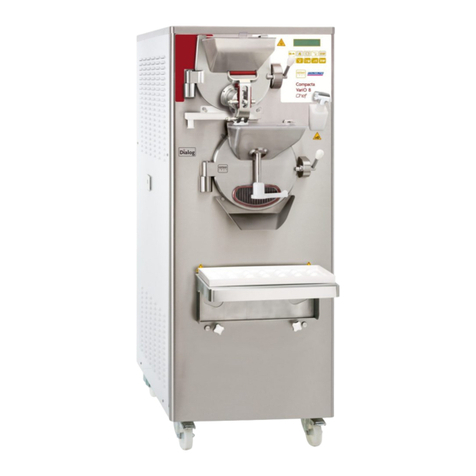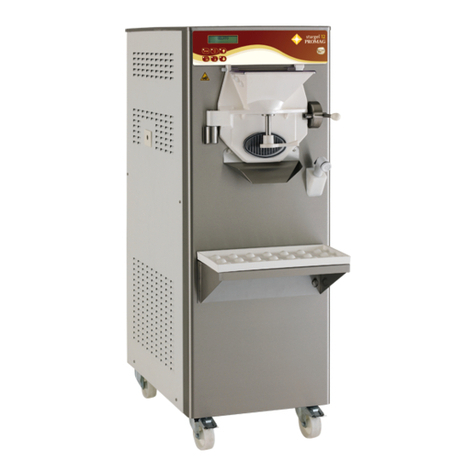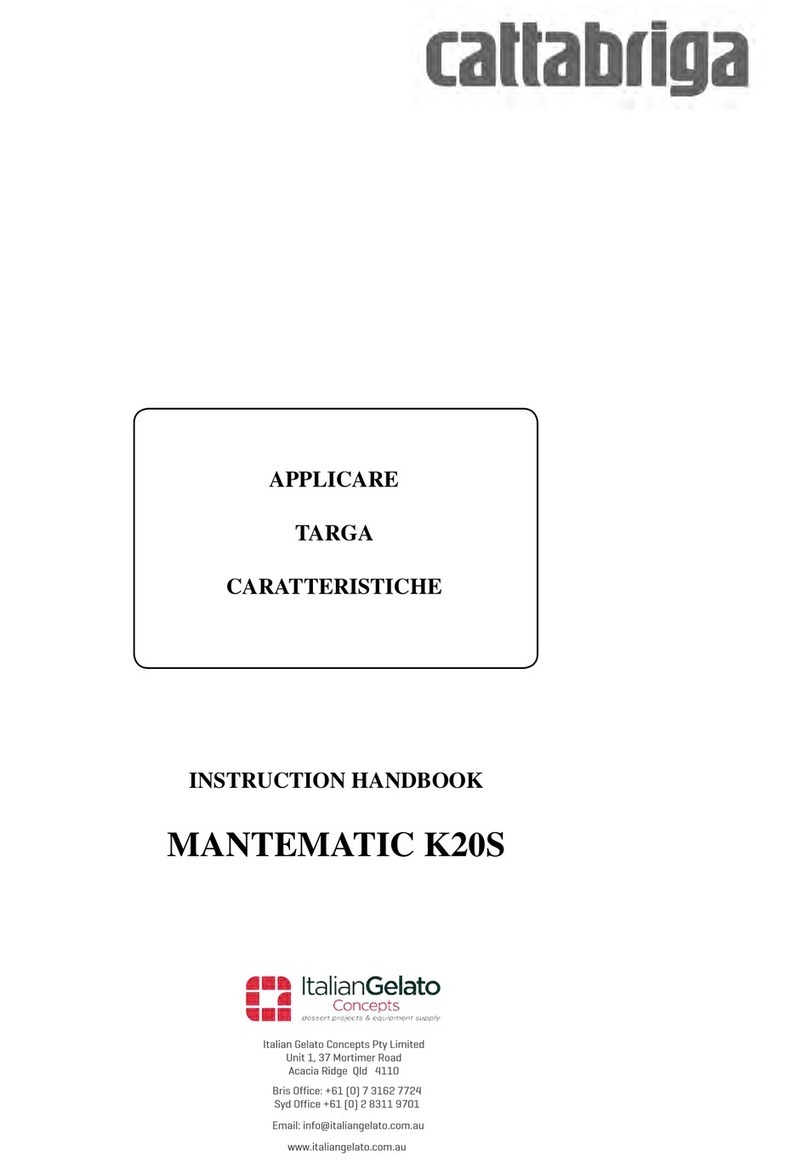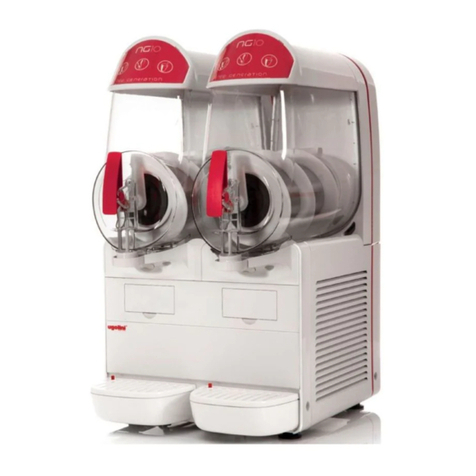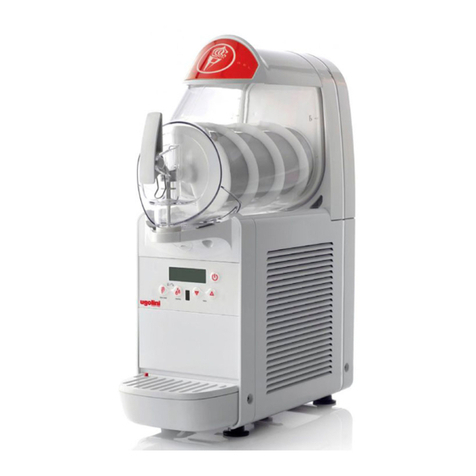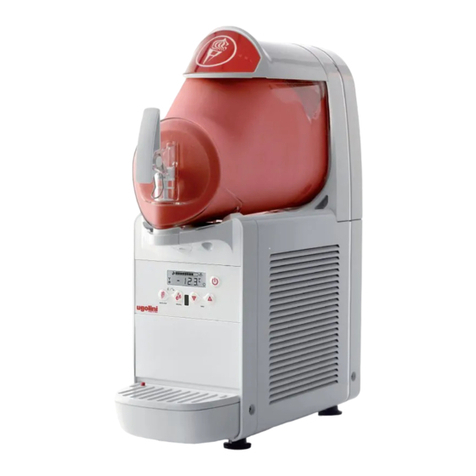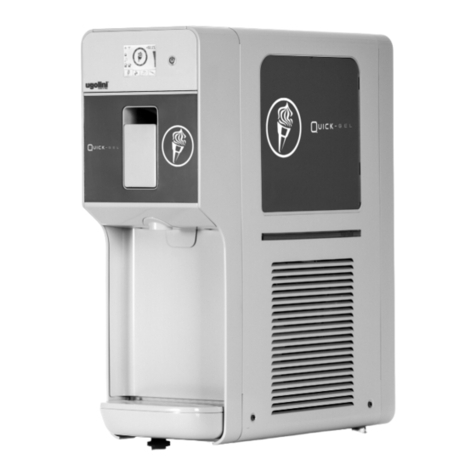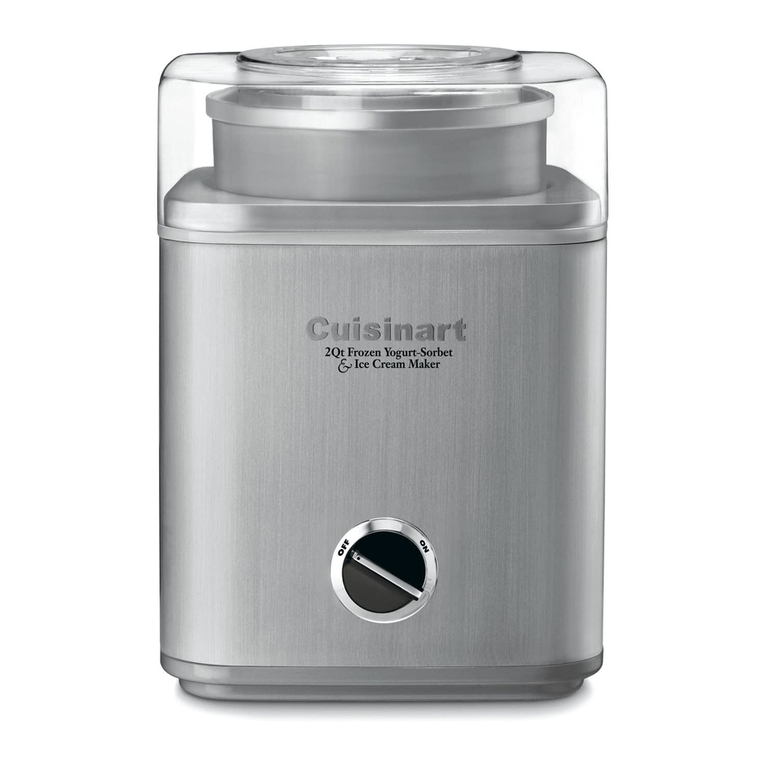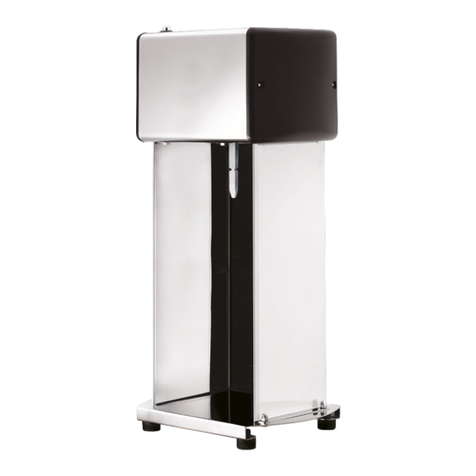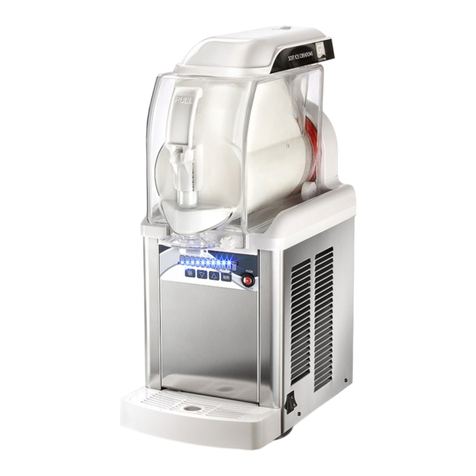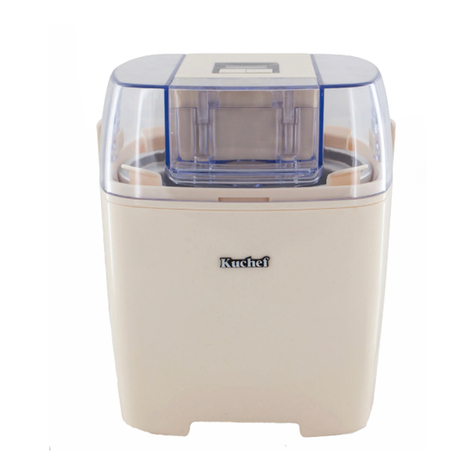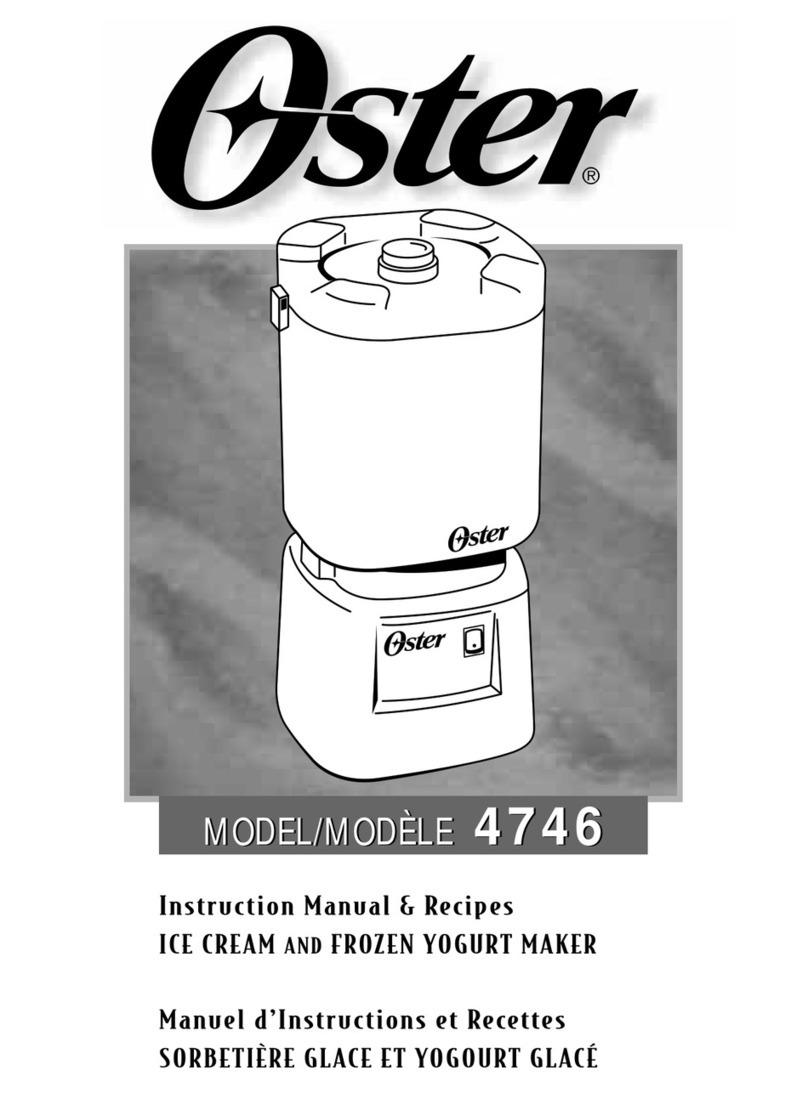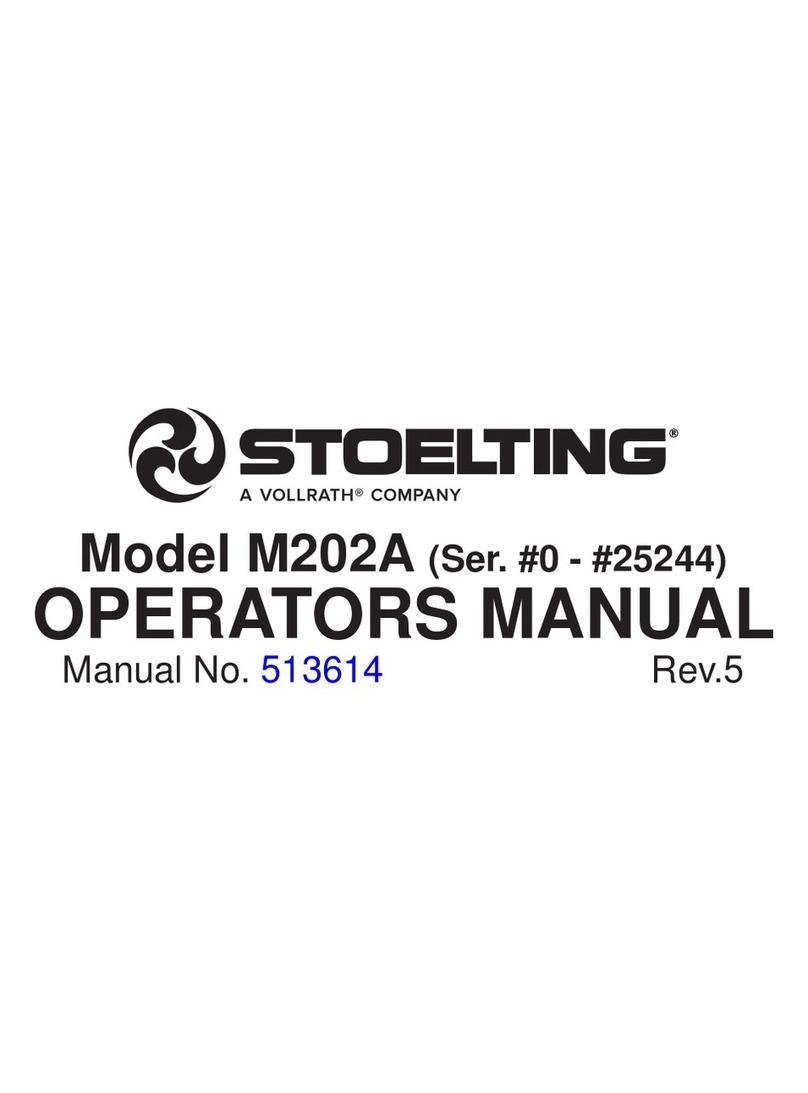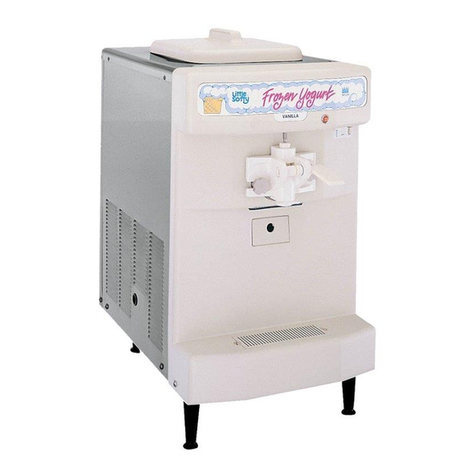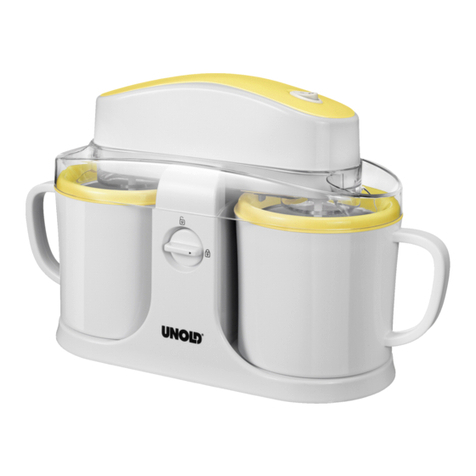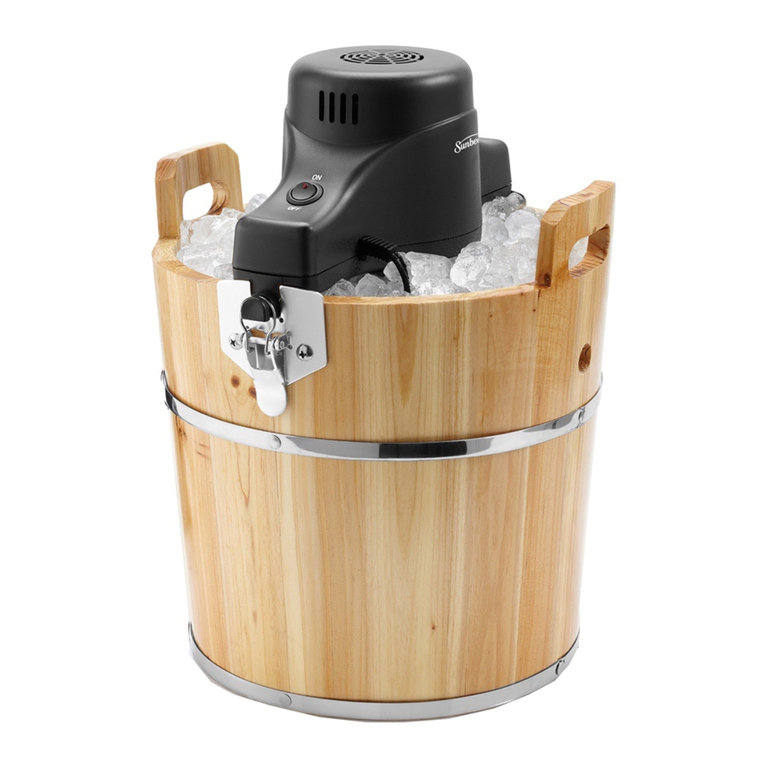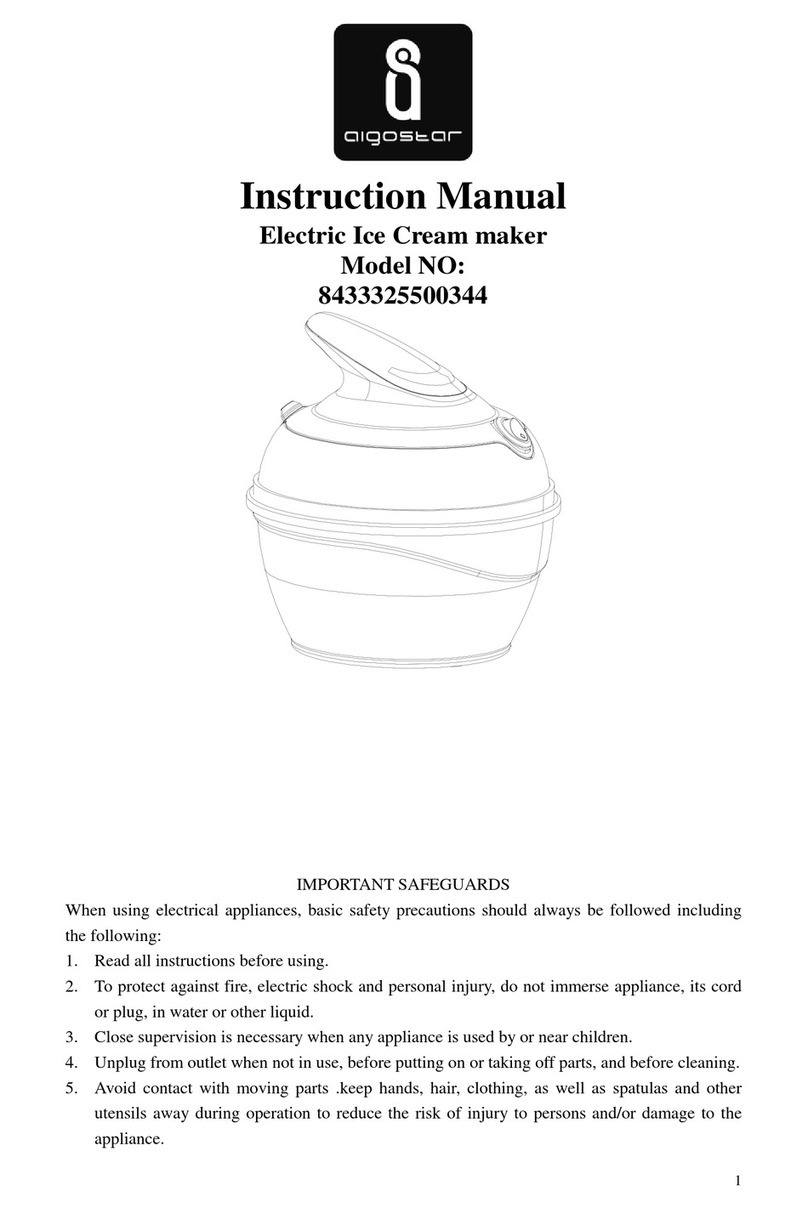3
Questo apparecchio è coperto da uno o più dei seguenti brevetti e/o altre domande di brevetto depositate:
This dispenser is manufactured under one or more of the following U.S.patents and/or other pending patents:
Cet appareil est couvert par un ou plusieurs des brevets suivants et/ou autres demandes de brevet déposées:
Dieses Gerät ist durch eines oder mehrere der folgenden Patente und/oder andere eingetragene Patentanmeldungen geschützt:
Este aparato está cubierto por una o varias de las siguientes patentes y/o otras solicitudes de patente ya registradas:
U.S.A. 4,900,158 - U.S.A. 4,696,417 - U.S.A. 5,713,214 - U.S.A. 5,906,105
4
12
1. L'apparecchio è garantito per un periodo di dodici mesi dalla data di acquisto.
Tale data viene certificata dalla ricevuta e/o fattura fiscale e/o da un documento at-
testante l'avvenuta consegna dell'apparecchio all'acquirente.
2. Per garanzia si intende la sostituzione o riparazione gratuita delle parti compo-
nenti l'apparecchio riconosciute difettose all'origine, per vizi di fabbricazione a con-
dizione che: A- il difetto di funzionamento dell'apparecchio sia stato -a pena di
decadenza- denunziato per iscritto dall'acquirente al produttore entro otto giorni dal-
la scoperta del difetto stesso; B-ove l'acquirente abbia diritto alla garanzia, sarà do-
vere di Ugolini s.p.a. provvedere -a sua insindacabile discrezione- alla sostituzione
integrale dell'apparecchio, ovvero alla sostituzione o riparazione delle sole parti di
esso riconosciute difettose all'origine, per vizi di fabbricazione.
3. Sono escluse dalla garanzia le parti dell'apparecchio aventi funzione estetica e/o
ornamentale, nonché le parti che dovessero risultare difettose a causa -o per effet-
to- di circostanze non connesse a vizi di fabbricazione ovvero a negligenza, imperi-
zia o trascuratezza nell'uso, installazione errata o, comunque, difforme rispetto le
istruzioni fornite dal produttore, manutenzione errata o eseguita da personale non
autorizzato da Ugolini s.p.a., o, comunque, effettuata in modo difforme rispetto alle
istruzioni fornite dal produttore, (ivi) trasporto eseguito in modo inidoneo o, comun-
que, con modalità differenti rispetto quelle indicate dal produttore; sono altresì
esclusi dalle prestazioni in garanzia gli interventi tecnici inerenti l'installazione e l'al-
lacciamento agli impianti di alimentazione elettrica o idrica.
4. E' esclusa dalla garanzia la responsabilità del produttore per l'ipotesi in cui l'ap-
parecchio determini la distruzione o il deterioramento di una cosa diversa dall'appa-
recchio stesso; è, inoltre, esclusa la responsabilità del produttore per eventuali
danni che possano, direttamente o indirettamente, derivare a persone e/o cose per
effetto della -e/o in correlazione alla- mancata o inesatta osservanza di tutte le pre-
scrizioni indicate nel manuale di istruzioni allegato all'apparecchio; nelle ipotesi in
cui il produttore sia tenuto a rispondere dei danni subiti dall'acquirente, il risarcimen-
to non potrà in ogni caso comportare, a carico di Ugolini s.p.a., un esborso superiore
al prezzo versato dall'acquirente per l'acquisto del prodotto.
5. Sono escluse dalla garanzia anche tutte le spese di trasporto.
6. L'intervento di riparazione dell'apparecchio deve essere effettuato presso Ugolini
s.p.a., ovvero presso uno dei laboratori autorizzati dalla medesima; le spese di tra-
sporto, ed i rischi ad esso connessi, sono interamente a carico dell'acquirente; ove
l'intervento di riparazione sia effettuato a domicilio, l'acquirente sarà tenuto a corri-
spondere il diritto fisso di chiamata in vigore presso il produttore alla data dell'inter-
vento.
7. Trascorsi dodici mesi dall'acquisto, decade il diritto di garanzia e l'assistenza ver-
rà esplicata addebitando, oltre alle spese di manodopera, anche il costo delle parti
sostituite e quelle di trasporto.
8. Sono esclusi la sostituzione dell'apparecchio ed il prolungamento della garanzia
a seguito di intervenuto guasto.
9. E' escluso dalla garanzia l'apparecchio la cui targa di identificazione risulti mano-
messa, asportata o comunque in condizioni tali da non rendere possibile l'identifica-
zione certa dell'apparecchio stesso.
10. Tale garanzia è valida solo nel territorio in cui l'acquirente ha la propria sede le-
gale alla data dell'acquisto dell'apparecchio.
GARANZIA
Ai sensi dell’art.13 del Decreto Legislativo 25 Luglio 2005, n.151 “Attuazione del-
le Direttive 2002/95/CE, 2002/96/CE e 2003/108/CE, relative alla riduzione
dell’uso di sostanze pericolose nelle apparecchiature elettriche ed elettroniche,
nonchè allo smaltimento dei rifiuti”.
Il simbolo del cassonetto barrato riportato sull’apparecchiatura o sulla sua confe-
zione indica che il prodotto alla fine della propria vita utile deve essere raccolto
separatamente dagli altri rifiuti.
La raccolta differenziata della presente apparecchiatura giunta a fine vita è organizzata e
gestita dal produttore. L’utente che vorrà disfarsi della presente apparecchiatura dovrà
quindi contattare il produttore e seguire il sistema che questo ha adottato per consentire
la raccolta separata dell’apparecchiatura giunta a fine vita.
L’adeguata raccolta differenziata per l’avvio successivo dell’apparecchiatura dismessa al
riciclaggio, al trattamento e allo smaltimento ambientalmente compatibile contribuisce ad
evitare possibili effetti negativi sull’ambiente e sulla salute e favorisce il reimpiego e/o rici-
clo dei materiali di cui è composta l’apparecchiatura.
Lo smaltimento abusivo del prodotto da parte del detentore comporta l’applicazione delle
sanzioni amministrative previste dalla normativa vigente.
Pursuant to the European Directives 2002/95/EC, 2002/96/EC and 2003/108/EC,
on restricting the use of hazardous substances in electric and electronic equip-
ment and on the disposal of waste material.
The crossed out wheelie bin symbol applied to equipment or packaging means
that the product should be collected separately from other types of waste at the
end of its useful life.
The separate collection of equipment that has reached the end of its life cycle is organised
and managed by the manufacturer. A user that wishes to dispose of this product should
therefore contact the manufacturer and follow the instructions given with respect to the se-
parate collection of obsolete equipment.
Correct separate collection and the subsequent recycling, treatment and environmentally
compatible disposal of discarded equipment is of aid in avoiding possible negative effects
for the environment and people's health and facilitates the re-use or recycling of the mate-
rials of which the equipment is made.
Illegal disposal of this product on part of the owner will give way to the application of admi-
nistrative fines as provided by current laws.
Conformément aux Directives européennes 2002/95/CE, 2002/96/CE et 2003/
108/CE, relatives à la réduction de l'utilisation de substances dangereuses dans
les appareils électriques et électroniques, ainsi qu'à l'élimination conforme et au
recyclage des déchets.
Le symbole de la poubelle barrée indiqué sur l'appareil ou sur sa boîte indique
qu'à la fin de sa vie utile ce produit doit être éliminé séparément des autres dé-
chets et conformément aux lois en vigueur en la matière.
La collecte différenciée de cet appareil à la fin de sa vie utile, est organisée et gérée par
le producteur. Par conséquent, lorsque l'utilisateur souhaitera jeter cet appareil il devra
contacter le producteur et respecter le système que ce dernier aura mis en place pour réa-
liser la collecte différenciée des appareils arrivés à la fin de leur vie utile.
La collecte différenciée correctement effectuée, suivie de l'envoi des appareils éliminés au
recyclage, avec traitement et élimination des déchets dans le plus strict respect de l'envi-
ronnement, est une procédure fondamentale qui contribue à éviter les possibles effets né-
gatifs sur notre environnement et sur notre santé, et qui favorise la réutilisation et/ou le
recyclage des matériaux qui composent ces appareils.
L'élimination abusive de ce produit par son propriétaire comporte l'application de sanctions
administratives sévères, prévues par la réglementation en vigueur.
Laut EG-Richtlinien 2002/95/EG, 2002/96/EG und 2003/108/EG zur Beschrän-
kung der Verwendung gefährlicher Stoffe in elektronischen Geräten sowie zur
Abfallentsorgung.
Das Symbol des durchgestrichenen Abfallcontainers auf der Packung gibt an,
dass das Produkt zum Ende seiner Lebensdauer getrennt von den anderen
Abfällen entsorgt werden muss.
Die getrennte Abfallsammlung dieses Geräts am Ende seiner Lebensdauer wird vom Her-
steller organisiert und verwaltet. Der Nutzer, der das Gerät entsorgen möchte, muss sich
daher mit dem Hersteller in Verbindung setzen und das System befolgen, das dieser an-
gewendet hat, um das Altgerät der getrennten Abfallsammlung zuzuführen.
Eine angemessene Mülltrennung, die das Altgerät zur Wiederverwertung und umweltver-
träglichen Entsorgung führt, trägt dazu bei, mögliche negative Auswirkungen auf die Um-
welt und die Gesundheit zu vermeiden und fördert die Wiederverwendung bzw. das
Recycling der Materialien, aus denen das Gerät besteht.
Die unerlaubte Entsorgung des Produkts durch den Benutzer zieht die Anwendung der
von der geltenden Richtlinie vorgesehenen Ordnungsstrafen nach sich.
En virtud de las Directivas europeas 2002/95/CE, 2002/96/CE y 2003/108/ CE,
relativas a la reducción del uso de sustancias peligrosas en los aparatos eléctri-
cos y electrónicos, así como a la eliminación de residuos.
El símbolo del contenedor tachado que aparece impreso sobre el aparato o sobre
su embalaje indica que al finalizar la vida útil del producto éste nunca debe de-
positarse junto al resto de residuos.
La recogida selectiva de este equipo cuando llegue al final de su vida útil la gestionará y
organizará el fabricante. El usuario que desee deshacerse de este equipo deberá ponerse
en contacto con el fabricante y seguir el sistema que éste haya adoptado para permitir la
recogida selectiva del aparato que haya llegado al final de su vida útil.
La recogida selectiva adecuada para el posterior reciclaje, tratamiento y eliminación del
equipo inservible, compatible con el medio ambiente, contribuye a evitar posibles efectos
negativos para el medio ambiente y para la salud y favorece la reutilización y/o el reciclaje
de los materiales de los que está compuesto el equipo.
La eliminación inadecuada del producto por parte de su propietario comportará la aplica-
ción de las sanciones administrativas previstas por la normativa vigente.

